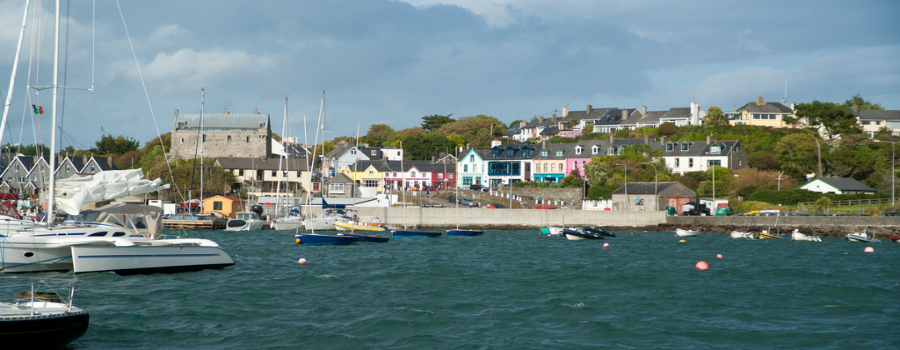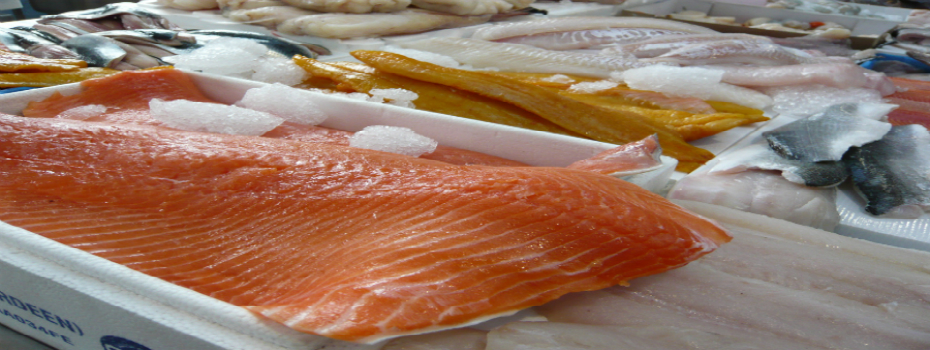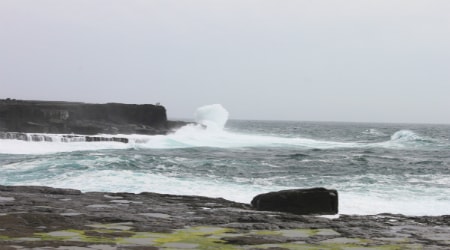About Marine Wildlife and Aquaculture in Ireland
Ireland's Marine Habitat
Ireland is an island and thus marine wildlife and aquaculture are very prominent. The rugged coastal edges of the island are one of the most lucrative for biodiversity as its the area where land and marine habitats intersect. A superb variety of plants and animals can be found within a small radius. For instance even what may seem like a simple rock pool, if in a limestone area can be one of the most abundant areas for intertidal marine animals. Ireland is located on the edge of the European shelf making it a spectacular and rich feeding area for seabirds, whales and dolphins.
Irish Seabirds
Ireland is internationally important for a large range of breeding seabirds with sites such as the cliffs of moher supporting over 30,000 pairs of seabirds with it being possible to view over 20 species of seabirds on-site. The cliffs of moher are home to 1,365 puffins, the largest mainland colony in Ireland. Puffins usually nest on steep slopes or cliff faces and headlands.
The Minke Whale in Irish Waters
The minke whale is the most common whale in Irish waters. It is quite a small whale growing to around 10m in length and can be seen off irish shores from early March until November. On a marine tour, it can be possible to good sighting of a minke whale due to the pattern in which they surface. Minke whales tend to surface several times in succession before it recedes for a deep dive lasting between five and ten minutes. A minkes whales "Blow" is difficult to witness but sometimes when the whale is close enough to us, it allows us to hear it. When a minke whale breaches the water which happens now and again, it's infamous white patches on the pectoral fins become visible!
The Humpback Whale in Irish Waters
Humpback whales numbers in Irish waters have been on the increase in recent years. The Irish Whale and Dolphin Group Irish Whale and Dolphin Group(IWDG) have been working hard building a database to catalogue and identify humpback whales in order to track accurate numbers.
Fin Whales in Irish Waters
It is possible on Marine Tour of Ireland to witness fin whales. Fin Whales are the worlds second largest animal growing up to 22 metres long! The best chance of seeing a fin whale is towards the end of summer. The "Blow" of the fin whale is very strong and distinctively tall and straight.
Killer Whales in Irish Waters
Killer Whales have been spotted off the coast of Ireland although sightings are rare so we can't make any promises on your marine tour. They grow up to 10m and are usually just passing through Irish waters.

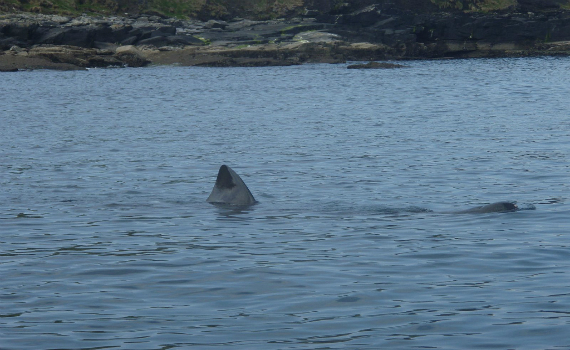
Dolphins in Irish Waters
The most frequently spotted species of dolphin on the marine tour of Ireland from Agritours are the Bottlenose Dolphin and the Common Dolphin. These are native to Ireland and may be witnessed all year round off the west and south coast. The Common Dolphin is split into two sub-species, the short-beaked and long-beaked species. These dolphins can travel in group sizes ranging anywhwere from 5-6 up to a few hundred. They tend to be boat friendly and very playful making them very popular among marine tours of Ireland visitors. Another regularly sighted dolphin species are the Risso's Dolphins. Rarer sighted species of dolphin include oceanic dolphins including Atlantic White-sided dolphin.
Short-beaked Common Dolphin in Irish Waters
The most common dolphin species we come across on marine tours of Ireland is the Short-beaked Common Dolphin. This species often rides the crest of a wave alongside our tour vessel allowing a great opportunity for photographs and analysis. The short beaked common dolphin is marked with it's beautifully aesthetic hourglass pattern.
Bottlenose Dolphin in Irish Waters
Bottlenose dolphins are among the friendliest Irish dolphins which tend to interact with humans more intimately. The most famous Irish dolphin is Fungie, a Bottlenose dolphin residing in Dingle, Co.Kerry. Fungie has had a fun and friendly relationship with humans for over 20 years. Bottlenose dolphins like Fungie who live in a restricted area are quite unusual as normally dolphins range over wide geographical areas. Another contradiction to this are the bottlenose dolphins that reside and restrict their travels in the Shannon Estuary in the West of Ireland.
Cetaceans in Irish Waters
Irish water are a very important habitat for Cetaceans, with 28% of the different types of species being found in Ireland or more specifically 24 species of cetacean. Cetaceans make up a large 48% of the native species of mammals in Ireland. Of the 24 species of cetacean, eighteen are species of toothed whale-including five species of beaked whale and there are six species of baleen whale. There are also two species of seal in Ireland, the grey seal and the common seal. Both species spend time on land but they mainly reside in the marine environment.
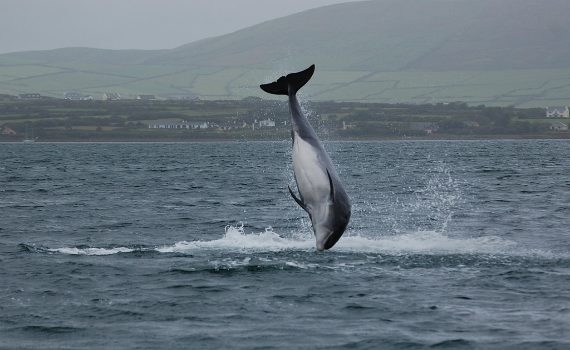
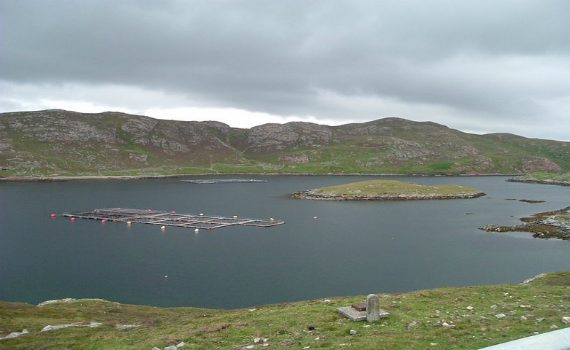
The Harbour Porpoise in Irish Waters
The harbour porpoise can be found close to Irish shores. It is the smallest cetacean found in Irish waters and is often mistaken on our marine tours for a dolphin! They average about 1.6 metres long when fully grown. Surprisingly for cetaceans, the female weighs in heavier at around 75kg in relation to the male which weighs in at around 61kg. Its short round beak is it's most distinguishing feature from a dolphin. Unlike many species of dolphin, porpoises are often cautious when it comes to human contact and rarely interact with our boats on the marine tours.
Aquaculture in Ireland
Fishing and the use of other natural resources like seaweed have historically sustained coastal communities in Ireland. Over 9,000 years ago Ireland had it's first coastal settlers who relied on fish traps and tidal mills as source of food. Special boats such as the currach were built to cope with the rough conditions of the atlantic. In Ireland lighthouses, piers and harbours are traditional part of coastal towns and villages making for a scenic backdrop. Islands with their small communities typify the toughness and creativity of irish coastal communities. There are over 300 islands, large and small situated just off the Irish coast. These communities like a lot of the remote coastal communities around Ireland rely on aquaculture, with produce from the sea being a major resource. The demand for Irish seafood is increasing at a quicker than our fishing quota allocations can sustain. Aquaculture is vital to these communities as it offers employment and revenue.
Ireland's Aquaculture Potential
Irish farmed fish and shellfish has an excellent reputation, and summons a premium price on major global markets. However at current production levels supply doesn't meet demand. With this natural untapped resource calls are being made to capitalise on it's potential and create a sustainable aquaculture industry that supports Ireland's coastal communities and allows them to thrive. Aquaculture is relatively new in Ireland, operated in Irish waters owned by the state on behalf of every citizen in the country. Effectively aquaculture creates a new raw material that allows for sustainable development of Irish coastal communities. This then creates further upstream and downstream employment in those areas.
Salmon Production in Irish Waters
According to a 2016 aquaculture survey by the Irish Sea Fisheries Board(BIM) The salmon sector produced output worth €94.7 million, directly employing 191 people. 142 people were employed in processing salmon and over 80 employed in associated services such as diving and maintenance. Salmon production may not be the biggest sector but provides mainly full-time employment. It has the biggest economic knock on effect when it comes to job creation, product range and value and other services related to bringing these high value products to the shelves.
Oyster Production in Irish Waters
Oyster production is the biggest employer within the aquaculture industry with over 1,200 employed in 2015 for gigas and native oysters. The most intensive production areas are in the southeast and northwest although oyster production takes place in all coastal areas of Ireland. Due to a shift in preference for smaller size oysters, value of Irish oysters have dropped slightly. The Irish industry couldn't adapt to this market preference on time in 2015 and along with an overall reduction in French consumption of Irish oysters this led to value decreasing although overall production increased marginally to over 9,000 tonnes. France however remain the main market for Irish oysters accounting for 76% of exports.
Mussel Production in Irish Waters
Mussel production in Ireland is now limited to three bays; Wexford Harbour, Castlemaine Harbour and Carlingford Lough. Producers in this sector have reduced from 46 in 2014 to 40 in 2015. However due to an increase in seed stock in the three producing bays, annual production is now back over 5,000 tonnes. There are two types of mussels produced in Irish bays; seabed cultured mussels and rope mussels. The majority of seabed cultured mussels are actually exported to Holland. Mussels are priced very low on the european market which means Irish producers are only achieving somewhere between €700 and €750 per tonne. Notwithstanding the sector contributes to the employment of over 270 people in the primary production of mussels. The majority of this employment is in Cork, the most important Irish rope mussel region, employing 60% within this sector.
